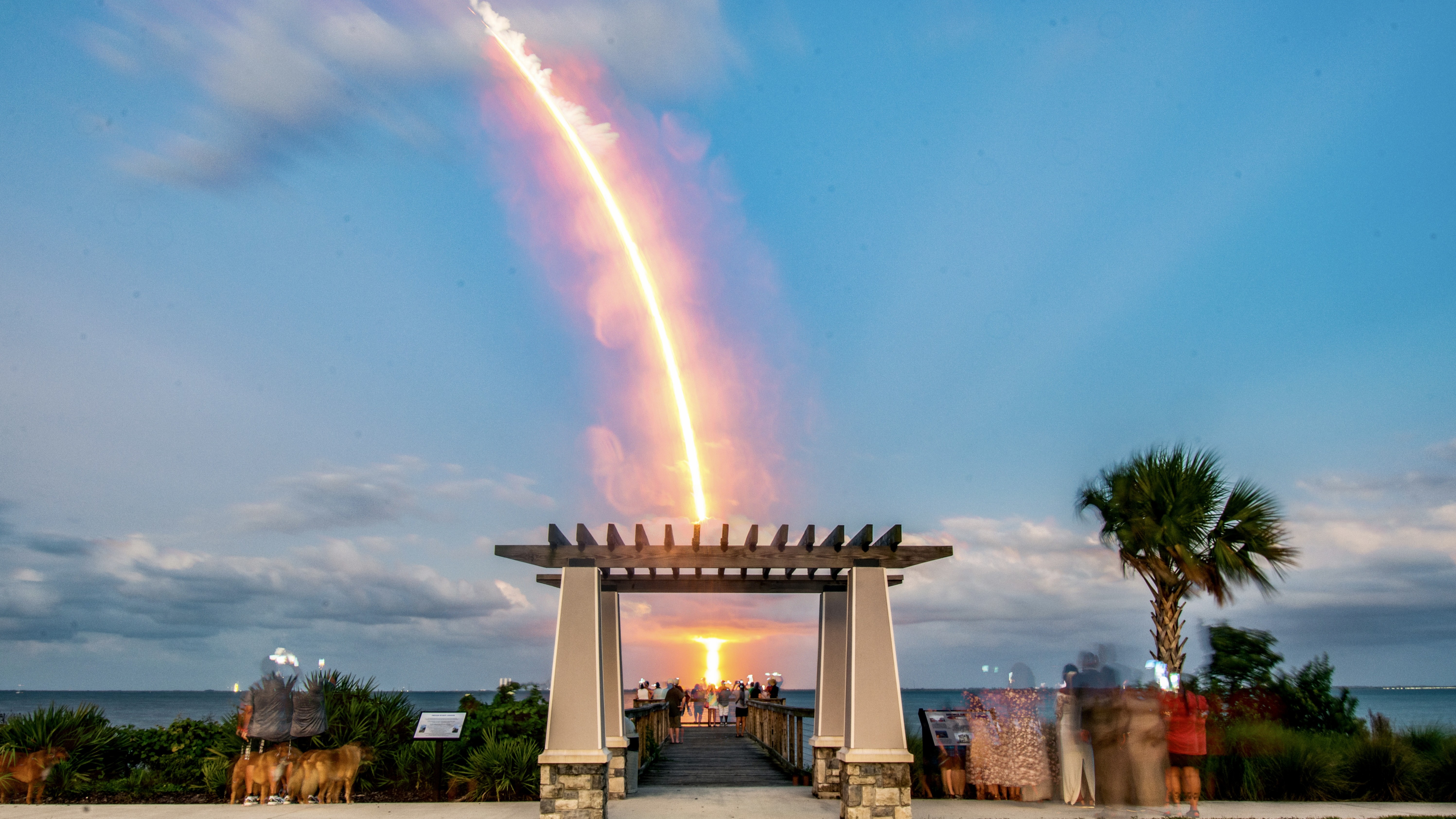Cold Interstellar Dust Shines Bright in New Image
A new image of vast filaments of frigid interstellar dustthat reach across our Milky Way galaxy is giving scientists new clues into theforces behind the birth of new stars and the galaxy's shape.
The European Space Agencys (ESA) Planck space observatorytook the new cosmic snapshot of dust structures spread across a region of spacewithin 500 light-years of the sun. In the image, the dust filaments link up tothe plane of Milky Way galaxy, which appears as a pink, horizontal bar acrossthe bottom of the image.
"What makes these structures have these particularshapes is not well understood," said ESA's Planck project scientist JanTauber in a statement.
The new image is color-coded to depict the temperaturesof different regions within the view. The whitish-pink areas are regions thatare just a few tens of degrees above absolute zero, the theoretical coldesttemperature possible in the universe (minus 459 degrees Fahrenheit or minus 273degrees Celsius). ?Deeper, richer colors mark areas of minus 437 degreesFahrenheit (minus 261 degrees Celsius). That's just 12 degrees Celsius warmerthan absolute zero.
While the warmer dust is concentrated along the plane ofthe Milky Way, the colder dust hovers above and below the galaxy's plane.
The Planckobservatory is designed to study the early universe bystudying the cosmic microwave background — light emitted just after the BigBang, which is thought to have created the universe 13.7 billion years ago.
The structures observed by Planck in the new imageinclude molecular clouds in more diffuse regions, as well as so-called "cirrus"dust clouds. They are made of both dust and gas, though the interstellar gascomponent is not directly visible, ESA officials said.
Breaking space news, the latest updates on rocket launches, skywatching events and more!
The clouds are pulled to and fro by a galaxy?s rotationand gravity, and can also be affected by radiation and particle jets that swirltheir component gas and dust around.
The bright clumps seen in the Planck image are collectionsof matter that may offer a safe harbor for new star formation. As these clumpscollapse inward on themselves they become denser, offering a more substantialshield against exterior light and radiation.
That shield can allow the clumps to cool and collapsefaster to make new stars, ESA officials said.
Planck launched in May 2009 alongside ESA's Herschelinfrared space observatory, which is also mappingthe universe to make detailed observation of structureson a smaller scale than Planck's view.
The new image from Planck reinforces a cosmic oddity thatis perplexing astronomers, ESA officials said. That question is why thelarge-scale dust filaments seen by Planck are similar to smaller-scale onesobserved by Herschel.
"That?s a big question," Tauber said.
- WISEUp: Space Telescope's Stunning First Photos
- Weird'Dark Flow' Seen Deeper Into the Universe Than Ever
- Video— The Herschel and Planck Missions

Space.com is the premier source of space exploration, innovation and astronomy news, chronicling (and celebrating) humanity's ongoing expansion across the final frontier. Originally founded in 1999, Space.com is, and always has been, the passion of writers and editors who are space fans and also trained journalists. Our current news team consists of Editor-in-Chief Tariq Malik; Editor Hanneke Weitering, Senior Space Writer Mike Wall; Senior Writer Meghan Bartels; Senior Writer Chelsea Gohd, Senior Writer Tereza Pultarova and Staff Writer Alexander Cox, focusing on e-commerce. Senior Producer Steve Spaleta oversees our space videos, with Diana Whitcroft as our Social Media Editor.
